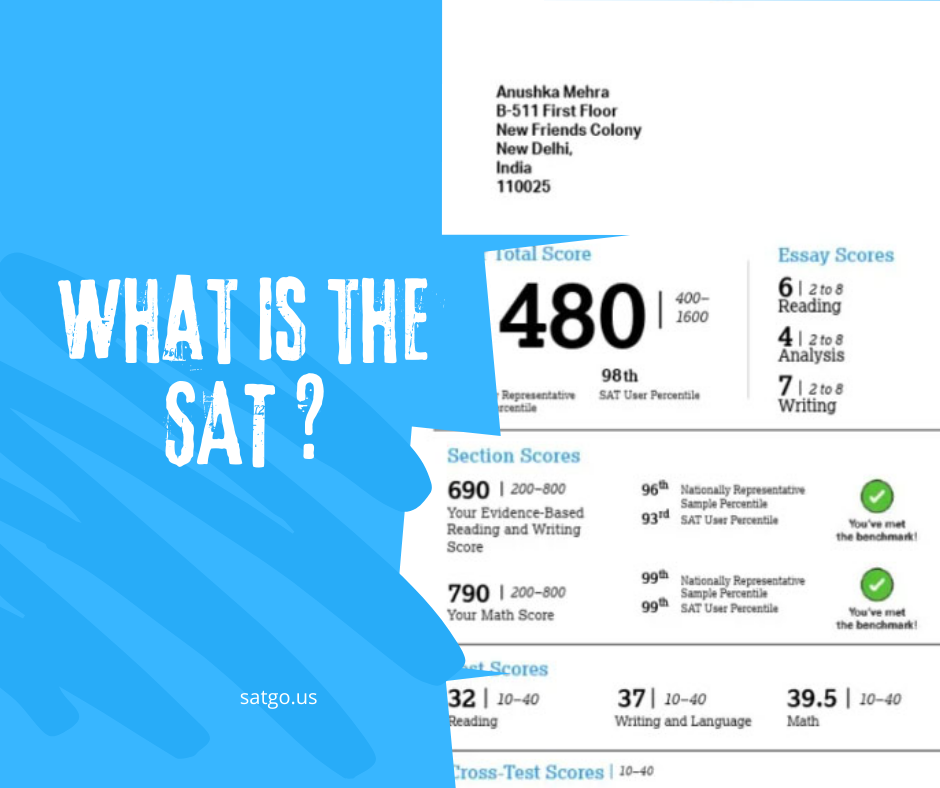If you’re planning to apply to college in the United States or considering scholarships that require standardized test scores, one exam you’ll likely encounter is the SAT. But what is the SAT, and why is it so important?
The SAT, short for Scholastic Assessment Test, is a globally recognized standardized exam administered by the College Board. It’s used primarily for college admissions in the United States, though thousands of institutions worldwide accept SAT scores as part of their evaluation criteria.
This comprehensive guide will explain what the SAT is, how it’s structured, who needs to take it, and how it plays a role in your college application strategy.
What Is the SAT?
The SAT is a multiple-choice, standardized test that evaluates a student’s academic readiness for college. It focuses on three core skill areas:
- Reading
- Writing and Language
- Mathematics
Until recently, the SAT also included an optional essay component, which has now been phased out for most students. The total score ranges from 400 to 1600, combining two sections: Evidence-Based Reading and Writing (EBRW) and Math.
Who Takes the SAT?
The SAT is most commonly taken by high school juniors and seniors who are preparing to apply to college. However, it’s also widely taken by international students who wish to study in the U.S., as many American universities require or recommend standardized test scores as part of the admissions process.
Even in a test-optional landscape post-COVID, many competitive programs still value strong SAT scores. According to the College Board, more than 1.7 million students took the SAT in 2023.
Structure and Format of the SAT
The SAT consists of two main sections:
Evidence-Based Reading and Writing (EBRW)
- Reading Test
- 52 questions
- 65 minutes
- Tests reading comprehension through passages from literature, social sciences, history, and science.
- Writing and Language Test
- 44 questions
- 35 minutes
- Focuses on grammar, punctuation, sentence structure, and rhetorical skills.
Math Section
- No Calculator Section
- 20 questions
- 25 minutes
- Calculator Section
- 38 questions
- 55 minutes
Math questions assess algebra, problem-solving, data analysis, and some advanced math topics. Both sections include multiple-choice and grid-in questions.
Scoring System
Each section (EBRW and Math) is scored on a scale of 200 to 800, with a total composite score ranging from 400 to 1600.
According to College Board data:
- The average SAT score in 2023 was approximately 1028.
- Competitive universities typically expect scores above 1350, and Ivy League schools often look for 1450+.
Digital SAT: What’s New in 2024?
Starting in 2023, the College Board began rolling out the Digital SAT, and by 2024, it will fully replace the traditional paper-based version for all international test-takers.
Key features of the digital SAT:
- Shorter duration: ~2 hours 14 minutes
- Adaptive testing: The difficulty adjusts based on your performance
- Faster results: Scores returned in days, not weeks
- On-screen calculator and timer tools available
- Same 1600-point scoring scale
This change is aimed at increasing accessibility, efficiency, and accuracy in assessing student readiness.
Why Is the SAT Important?
1. College Admissions
The SAT offers colleges a standardized benchmark for evaluating students from different educational systems and backgrounds. It complements other parts of your application such as GPA, extracurriculars, essays, and recommendation letters.
2. Scholarships
Many merit-based scholarships require SAT scores. Higher scores can qualify students for financial aid or honors programs at top institutions.
3. Course Placement
Some universities use SAT scores for placement into freshman-level courses, especially in Math and English.
4. Global Recognition
Over 4,000 universities in the U.S. and abroad accept SAT scores, including institutions in Canada, the UK, Singapore, India, and Australia.
How to Register for the SAT
You can register online through the College Board’s official website. The SAT is offered seven times per year in the U.S., and several times internationally.
The base fee for the SAT is $60, with an additional international fee that varies by country.
How to Prepare for the SAT
1. Take a Diagnostic Test
Start by taking a full-length practice SAT to assess your current level and identify strengths and weaknesses.
2. Create a Study Plan
A typical preparation period lasts 2–4 months. Use tools like Khan Academy (official College Board partner) for personalized SAT practice.
3. Learn Time Management
Pacing is critical, especially in reading and math sections. Practice under timed conditions to build speed and accuracy.
4. Focus on High-Yield Topics
Prioritize core math concepts (linear equations, functions) and grammar rules (subject-verb agreement, punctuation) that frequently appear.
5. Take Practice Tests
Aim to complete at least 3–5 full-length practice exams before test day. Analyze your mistakes and adjust your strategies accordingly.
SAT vs ACT: Which Should You Take?
While the SAT and ACT are both accepted by U.S. universities, they have slight differences:
| Feature | SAT | ACT |
| Duration | ~2h 14m (Digital) | ~2h 55m |
| Math Emphasis | Heavier, includes data analysis | Includes more geometry and trigonometry |
| Science Section | No | Yes |
| Essay | Discontinued | Optional (still available) |
Choose the test that plays to your strengths, or try both and submit the higher score.
So, what is the SAT? It’s a standardized test that measures academic skills in reading, writing, and math, and plays a key role in college admissions—especially in the United States. Whether you’re aiming for a scholarship, trying to stand out in a competitive pool, or fulfilling admissions requirements, the SAT remains a valuable credential in your academic toolkit.
As the SAT transitions into a fully digital format, it offers students a faster, more modern testing experience without compromising on rigor or fairness. If you plan to apply to U.S. universities or want to enhance your academic profile, understanding and preparing for the SAT can open the door to numerous opportunities.



